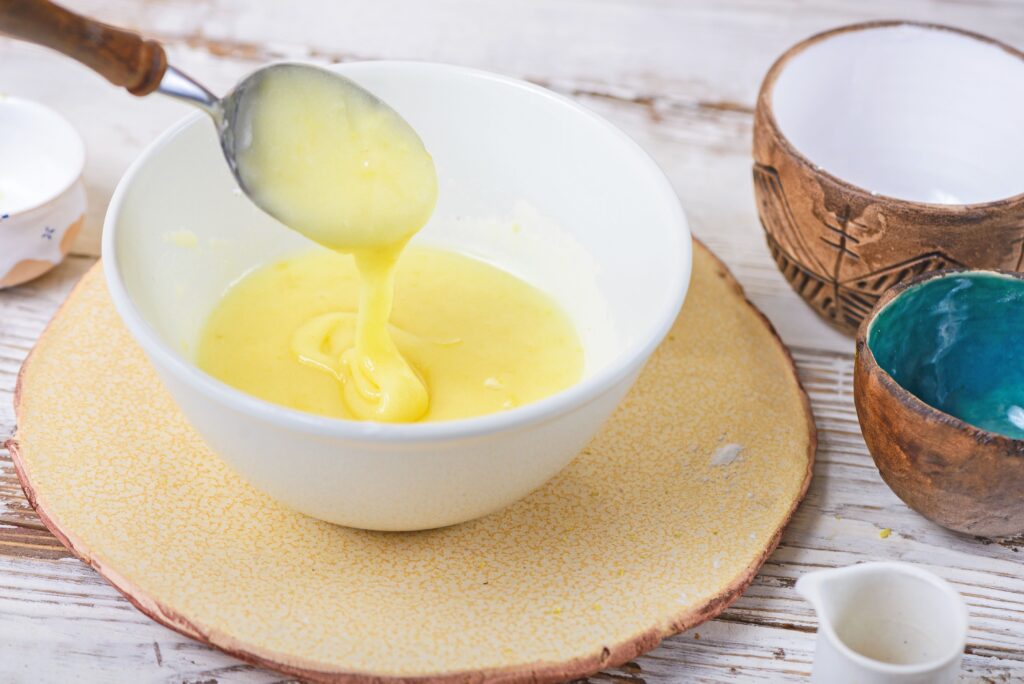What is the difference between a sauce and a glaze? A sauce is a condiment that is added to food after it has been cooked, while a glaze is applied during the cooking process. Most glazes are far thicker than any sauce, and the sugar levels are much greater.
While ham is the most typically glazed protein, glazes may (and should!) be used on ribs, chicken, duck, and shellfish as well.
I’ll show you my basic glaze as well as four additional variants to use with various proteins.
Contents
- Sauce VS Glaze: What’s the difference?
- When to use a glaze
- My standard ‘go-to’ glaze
- 5 Delicious Glaze Recipes to Try
- FAQs
- What is the difference between glaze and sauce?
- What are the different types of glazes and sauces?
- What does glaze sauce mean?
- Can glaze be used as a sauce?
- What are 3 types of glaze?
- What are the 4 ingredients in glaze?
- What are the 5 basic components of glaze?
- What are the 5 types of sauce?
- How do I know what glaze to use?
- What does glaze mean in a recipe?
Sauce VS Glaze: What’s the difference?

The precise distinction is debatable, but in my mind, a glaze is a form of sauce that has a thicker, shinier texture and adheres to food.
Glazes are often applied throughout the cooking process (though not always at the start), while sauces are added at the conclusion.
So, what about marinades? That is when the meat is generally marinated in a sauce before being grilled.
When to use a glaze
What one person does in their garden or kitchen should not determine what you do in yours.
However, there are certain proteins that pair very well with a glaze. Pork and chicken would have to be towards the top of the list.
I like Asian cuisine, whether Chinese, Korean, or Cantonese. These culinary methods depend extensively on glazes to provide depth of flavor to their manner of cooking and the various regions.
Then there are sections of the United States that depend on glazes to finish their proteins. Even the Texas mop sauce is fundamentally a glaze; it’s thinner and has more savory overtones than the normal glaze, but it has every other attribute of a glaze.
It is used on the meat as a glaze in the latter stage of the cooking process, similar to using a Plum sauce in Asian cuisine, however its name has sauce in it but it is really a glaze when you examine how it is applied to the dish.
My standard ‘go-to’ glaze
There’s no need to overcomplicate the process of manufacturing a glaze. The glaze’s main purpose is to offer another taste and textural aspect to our dish, a sweet sticky fantastic flavor.
To make this glaze, just combine all of the specified components in a small saucepan; the deeper the pan, the less likely the sauce will burn owing to the glaze’s high sugar content.
Warm the glaze over medium heat for 15 to 20 minutes, stirring regularly. We’re only waiting for the sugars to dissolve and the mixture to thicken.
Remember to stir constantly since we don’t want this to burn.
Remove the glaze from the heat after all of the sugars have been dissolved and the glaze has thickened.
5 Delicious Glaze Recipes to Try
You may adjust the proportions of the components in this glaze to suit various proteins and your particular preferences.
1. Maple Mustard Glaze
- cup of maple syrup (or honey if you prefer)
- cup of brown sugar (tightly packed)
- 3 tbsp Dijon mustard (or any plain mustard)
- tsp of ground cinnamon
- tsp of Allspice (or nutmeg)
2. Asian Chicken Gaze:
- Remove the cinnamon, allspice, mustard, and brown sugar from the pan.
- 3 tbsp.Substitute honey for the maple syrup and reduce the amount to 1
- Add a couple of tbsp of kecap manis to the mix.
- A teaspoon of soy sauce for a savory, salty depth of flavor.
- Add 2 tsp of peeled and grated fresh ginger.
- plus 2 garlic cloves, freshly grated, plus the juice of one lime.
- Add a tbsp of Sweet Chili Sauce for the heat seekers; it’s not too spicy but will give it a little bite. If you really want to amp up the heat, use a teaspoon or two of hot sauce or dried red pepper flakes instead of the sweet chili sauce.
3. Duck Glaze:
- Remove the cinnamon and allspice.
- Substitute an equal quantity of honey and maple syrup for the maple syrup.
- Change the 3 tbsp of Dijon mustard to only one.
- 1 tsp of Dried thyme
- a cup orange juice
- a cup balsamic vinegar
- 2 cloves of crushed garlic garlic
- 3 tbsp of orange liqueur or port wine
4. Pork Chop Glaze:
- Change the maple syrup to just a cup of honey.
- Remove the brown sugar, Dijon mustard, cinnamon, and allspice from the mixture.
- 2 tablespoons apple cider vinegar (or whatever white vinegar you have on hand).
- 1 tsp of garlic powder
- 6 cloves of minced garlic
- cup of chicken broth
- 2 tbsp of olive oil
- 1 tbsp of unsalted butter
- Season to taste with salt and pepper.
5. Rib Glaze:
- Remove the ground cinnamon and allspice.
- Lower the maple syrup to only 1/3 of a cup.
- 3 cup Dijon mustard (or any basic yellow mustard).Increase the mustard to 1 teaspoon.
- Add in 2/3 cup of ketchup.
- 2 tbsp apple cider vinegar (or white vinegar of choice)
- 1 tsp of black pepper